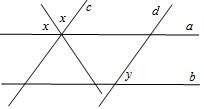
Mathematics, 26.10.2020 16:30 LuckyCharms988
Let S = {0, 1} and consider the partial order relation R defined on S ✕ S as follows: For all ordered pairs (a, b) and (c, d) in S ✕ S, (a, b) R (c, d) ⇔ a ≤ c and b ≤ d, where ≤ denotes the usual "less than or equal to" relation for real numbers. Find a chain of length 2 for R.

Answers: 2


Other questions on the subject: Mathematics

Mathematics, 21.06.2019 15:30, AutumnJoy12
James is playing his favorite game at the arcade. after playing the game 3 times, he has 8 tokens remaining. he initially had 20 tokens, and the game costs the same number of tokens each time. the number tt of tokens james has is a function of gg, the number of games he plays
Answers: 2

Mathematics, 21.06.2019 17:30, aliami0306oyaj0n
Lindsay used two points, (x, y; ) and (+2.82), to find the equation of the line, y = mx + b, that passes through the points. y2-y, first, she used the definition of slope and determined that the value of mis x, - . given this information, which expression must represent the value of b?
Answers: 2

You know the right answer?
Let S = {0, 1} and consider the partial order relation R defined on S ✕ S as follows: For all ordere...
Questions in other subjects:

Mathematics, 15.10.2020 14:01


Mathematics, 15.10.2020 14:01

Mathematics, 15.10.2020 14:01

Mathematics, 15.10.2020 14:01

English, 15.10.2020 14:01

Health, 15.10.2020 14:01

Mathematics, 15.10.2020 14:01

Mathematics, 15.10.2020 14:01





